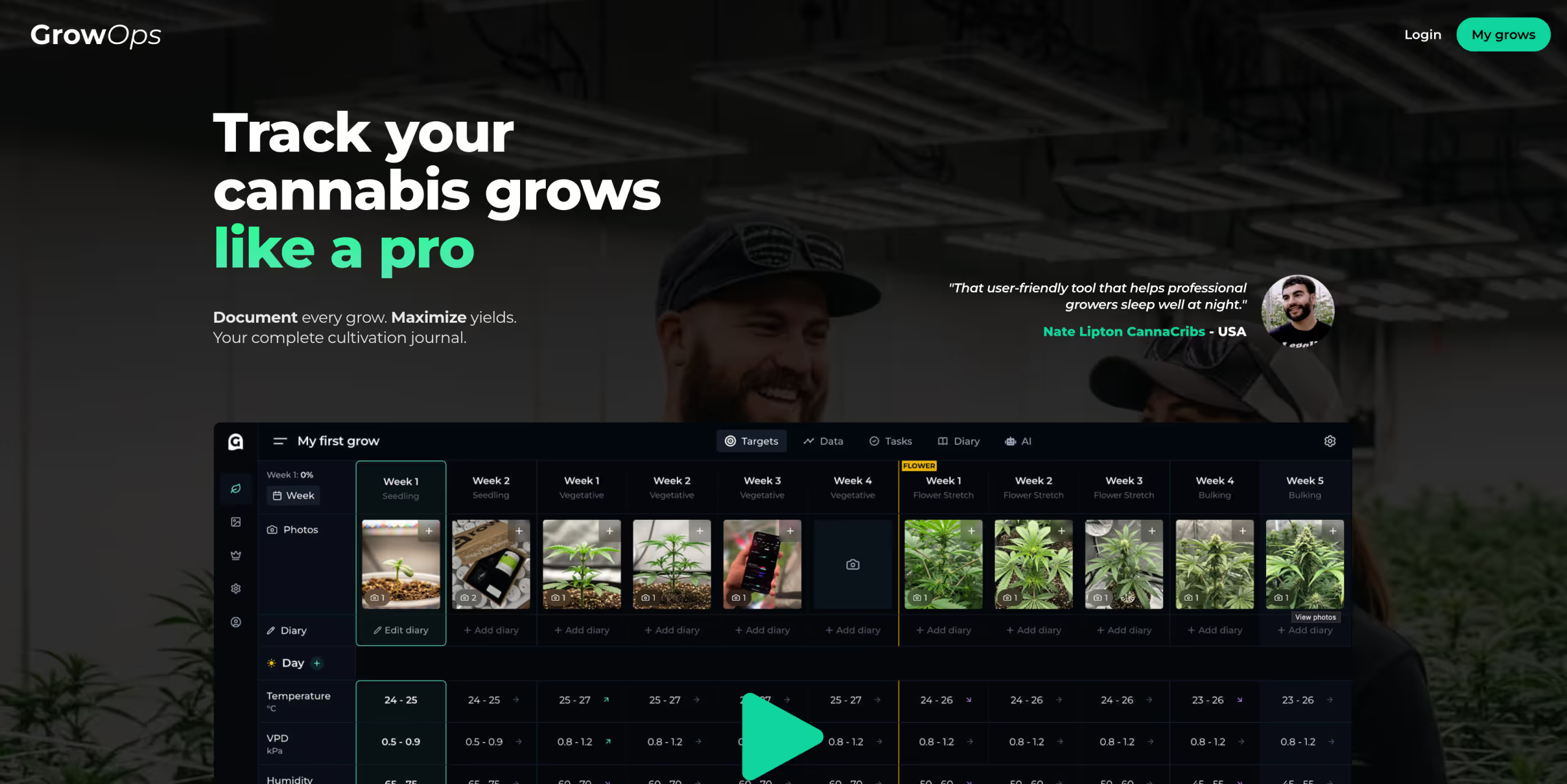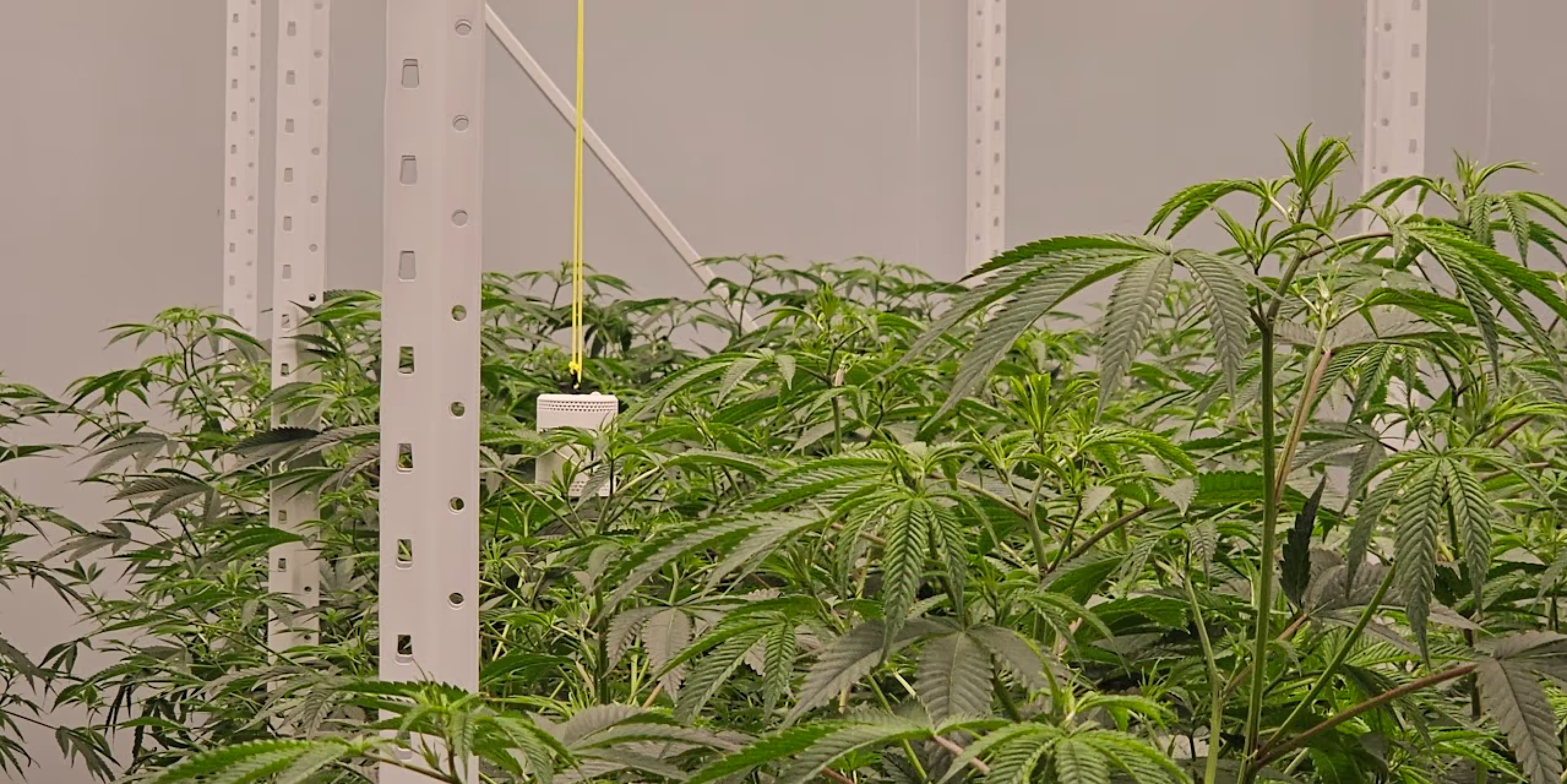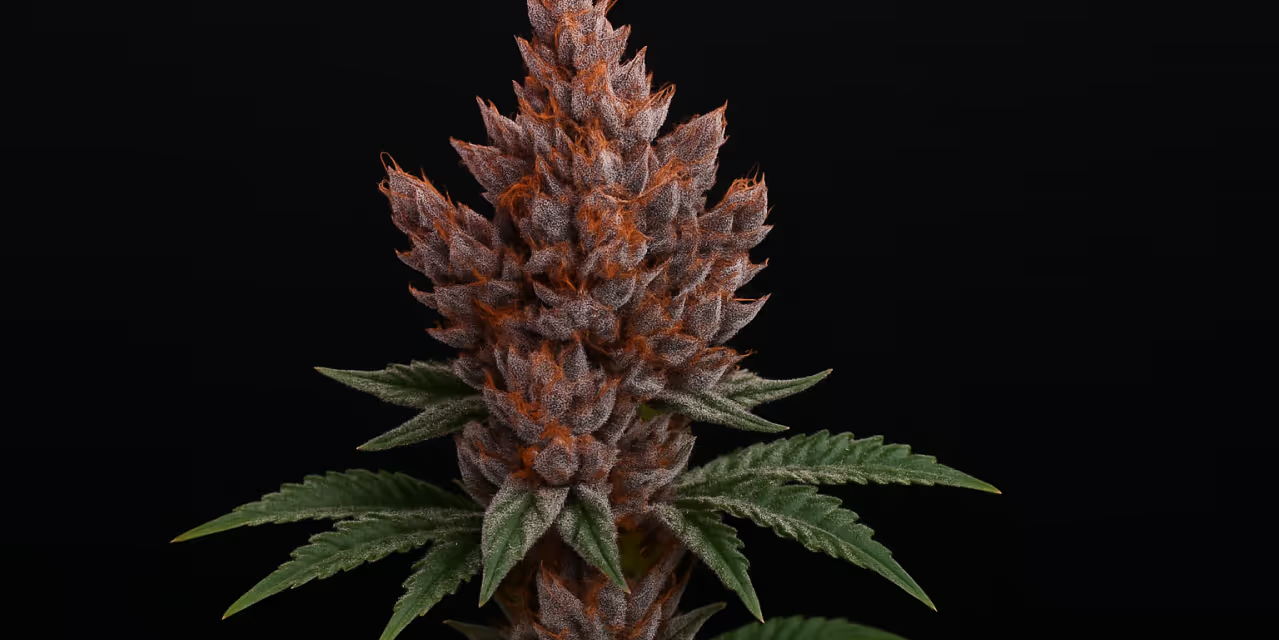Phenos explained: Grow amazing cannabis


Unlocking the full potential of your cannabis starts with understanding phenos.
If you've ever struggled to achieve consistent, high-quality yields, this post contains the info you've been searching for.
Without the right knowledge, you risk wasting time, money, and effort on subpar harvests.
We'll explore cannabis phenos, how to identify and select the best ones, and why starting with quality seeds is crucial.
With our expert insights, you'll gain the knowledge to grow excellent cannabis every time.
Disclaimer: Any information given on this site is for educational purposes only. Please ensure if you’re growing cannabis, you’re doing so by the law and subject to appropriate permissions and licenses of the applicable country.
Definition of pheno and phenotype
The terms "pheno" and "phenotype" are frequently used but often misunderstood.
What is a pheno?
A "pheno" is short for phenotype, which refers to the observable traits of an organism or, in this case, a plant. These traits can include factors like height, colour, leaf shape, and aroma.
Essentially, a phenotype is how a plant expresses its genetic makeup in response to its environment.
Understanding phenotypes is crucial for cannabis growers because each seed can produce a plant with unique characteristics, making every pheno potentially different.
Difference between genotype and phenotype
To fully grasp the concept of phenotypes, it's important to differentiate between genotype and phenotype.
What is pheno vs geno?
The genotype refers to the genetic makeup of the plant – the specific genes it carries (DNA).
These genes are like the blueprint, determining the potential traits and characteristics the plant can express.
On the other hand, the phenotype is the actual expression or physical manifestation of these traits, influenced by environmental conditions.
In other words, while the genotype provides the potential, the phenotype is what you see and experience.

Phenotypic plasticity and phenotypic variation
Phenoplasticity refers to the ability of a single genotype to produce different phenotypes in response to varying environmental conditions.
This means that even plants with the same genetic makeup can look and perform differently if grown in different environments. This is why environmental monitoring is key!
Phenotypic variation, on the other hand, is the diversity of phenotypes within a population of plants. This variation can result from genetic differences, environmental influences, or a combination of both.
Understanding these concepts is key to mastering cannabis cultivation, as it helps you predict and influence cannabis phenotypes - the attributes your cannabis will exhibit.
Knowing the difference between genotype and phenotype, and understanding phenotypic plasticity and variation, will empower you to select and grow the best possible cannabis phenos.

The importance of quality seeds
F1 and F2 phenos
When starting your cannabis cultivation journey, understanding the difference between F1 and F2 phenos is crucial.
F1 phenos are the first generation of offspring from two distinct male and female plants or parents.
These seeds tend to be more stable and consistent in their traits because they come from well-established genetic lines.
On the other hand, F2 phenos are the result of crossing two F1 plants.
While F2 seeds can offer more genetic diversity, they also bring higher variability, meaning the plants can exhibit a broader range of traits or different cultivars, both desirable and undesirable.

Importance of choosing a good seed breeder
Selecting a reputable seed breeder is one of the most important steps you can take as a grower.
Reputable seed providers invest in the breeding and development of stable genetics, ensuring that the seeds you purchase have predictable and desirable characteristics for mass cultivation.
This stability is key to achieving consistent results you can reproduce in your cannabis cultivation.
With the best seeds, you are more likely to grow cannabis that exhibits the features you aim for, whether it’s high resin production, specific terpene profiles, or robust plant structure.
Friendly tip - make sure all your seeds are correctly labelled!
Risks of cheap seeds
While saving money by opting for cheaper seeds might be tempting, this often comes with significant risks.
Cheaper seeds are usually less stable, leading to the development of higher phenotypic variation.
This means you could end up with cannabis that varies widely in terms of growth, yield, and quality.
Unstable genetics can result in plants that are difficult to manage, have lower resilience to pests and diseases, and produce inconsistent cannabis.
In the long run, investing in high-quality seeds from a trusted provider will save you time, effort, and resources and lead to a much more satisfying cultivation experience.
The calibre of your seeds sets the foundation for your entire cannabis grow.

Pheno hunting: Finding a great pheno
What does it mean to pheno hunt?
Pheno hunting is the process of growing multiple seeds of the same strain to identify the best and most desirable phenotypes.
This practice is essential because even seeds from the same genetic pool can exhibit various attributes and characteristics.
By pheno hunting, you can select cannabis with the most desirable attributes, such as high resin production, unique terpene profiles, and optimal plant structure.

How to pheno hunt?
The first step in a successful pheno hunt is to begin with reliable, quality genetics. Choose seeds from reputable providers known for their steady and consistent strains.
Look for F1 seeds when possible, as they tend to offer more uniform traits.
Plant as many seeds as possible within legal and spatial limits
To maximise your chances of finding the perfect pheno, it's crucial to plant as many seeds as your legal and spatial limits allow.
The more you plant, the greater the variety of phenotypes you'll observe. This variety increases your chances of identifying cannabis with exceptional characteristics.
Keep in mind the laws and regulations regarding the number of plants you can grow, and make sure your growing space can accommodate the number of plants you intend to cultivate.

Observing and selecting phenos
Initial growth phase:
During the initial growth phase, it's essential to observe and document the structure of the plant, as well as the height and growth patterns of your cannabis.
Look for attributes such as how quickly the plants grow, their overall shape, and the development of the branches.
Plants with a strong, sturdy structure and balanced growth are generally more desirable. Note any height and leaf formation variations, as these can indicate different phenos.
Keep detailed records of these observations to help you make informed decisions later.

Flowering phase:
As your plants start to flower, new characteristics become important for identifying desirable phenos.
Monitor the smell of the plants as buds form. Aromatic compounds within the flower are a key indicator of terpene profiles, which affect the final flavour and aroma of cannabis.
Observe the trichome appearance and yield potential, noting which plants produce the most substantial and dense buds over the course of maturation.
Pay attention to how long your plants take to flower; some phenos need a longer maturation time than others, which can be advantageous depending on your growing schedule.
Additionally, watch for plant stretch during flower, as excessive stretching can indicate a less desirable pheno for indoor grows.

Harvest time
The harvest phase is when you can fully assess the quality of your phenos. Evaluate the final smell of the flower, looking for rich and appealing aromas.
Once you’ve thoroughly dried and cured your buds and they’re all prepared, judge your end product's appearance and bag appeal.
Test the effect of the cannabis to determine its potency, THC levels and how it matches your desired cannabis experience, whether for recreational or medicinal use.
The strength and longevity of the effect on the body and mind are crucial factors. After drying and curing your flower, assess their storage qualities.
Buds that maintain their potency, aroma, and appearance over time are highly desirable.
Throughout these phases, meticulous observation and record-keeping are essential.
By documenting the characteristics and features of each plant, you can identify and select the phenos that best meet your goals, whether for personal use or commercial cultivation.

Data collection and analysis
Collecting statistics throughout the growth and flowering phases is crucial for identifying and selecting the best phenos.
Logging details you’ve observed allows you to track the performance of each plant, compare their attributes, and make informed decisions about which phenos to keep and propagate.
Without systematic data collection, it becomes difficult to remember specific details about each plant, making the pheno hunting process less effective.
Consistent collection of information ensures that you have a comprehensive record of each plant's characteristics and performance.
Methods for recording observations and assessing phenos
Effective data collection involves using reliable methods to record observations and assess phenos. Here are some strategies to help you get started:
1. Digital tools and apps: Log data observed about your plants or strains using digital tools and apps designed for growers. These platforms often offer features like:some text
- Photo uploads
- Growth stage tracking
- Customisable fields for specific observations
2.Grow journals: Use crop registration to maintain a detailed grow journal where you can manually record observations about your cultivars. Include information such as: some text
- Seed origin
- Germination date
- Growth rate
- Maturation time
- Structure and appearance of the plant
- Leaf shape
- Distribution of buds
- Trichome appearance (trichomes come in different sizes and shapes)
- Level of resilience to pests or diseases
- Any notable properties
3.Photographic records: Take regular photos of your plants at different stages of growth from veg right up to the end of flower. Visual documentation of your cultivars helps you track changes over time and compare different cultivars side by side.
4. Spreadsheets: Use spreadsheets to organise and analyse your information. Spreadsheets allow you to sort and filter data about your cultivars easily, helping you identify trends and standout phenos. Create columns for different attributes, such as: some text
- Height
- Time to flower
- Yield
- Smell
- Resin production
5. Observation templates: Develop standardised observation templates to ensure you consistently record the same types of information for all of your plants and strains. This consistency is vital for accurate comparisons and assessments.
6. Regular monitoring: Set a schedule for regular monitoring and logging of information. Consistent observation of your cultivars, such as weekly or bi-weekly check-ins, ensures you capture all relevant data points throughout the plant's lifecycle.
By implementing these methods, you can effectively collect and analyse information on your cannabis phenos. This structured approach will help you identify the best plants with desirable traits.

Cloning and preserving desirable phenos
Once you've identified your most desirable phenos, preserving them for future cultivation is essential. Here are the steps to clone or re-veg your selected phenos:
- Cloning:some text
- Select healthy plants: Choose the healthiest and most vigorous plants from cultivars with the traits you want to preserve.
- Take cuttings: Using clean, sharp scissors, take cuttings from the lower branches of the selected plant. Each cutting should be about 10-15cm long and include a few leaves.
- Prepare cuttings: Remove the lower leaves from the cutting, leaving only the top set of leaves. Dip the cut end in a rooting hormone to encourage root development.
- Plant cuttings: Place the cuttings in a medium like rock wool cubes or directly in soil. Keep the medium moist and provide a humid environment, such as a humidity dome, to promote root growth.
- Monitor and care: Keep the cuttings under low-intensity light and maintain high humidity until roots develop, typically within 1-2 weeks. Gradually acclimate the clones to lower humidity and stronger light as they grow.
- Re-vegging:some text
- Harvest carefully: When harvesting the plant, leave some lower branches and small buds intact. This residual growth will help the plant re-veg.
- Switch light cycle: To encourage vegetative growth, change the light cycle back to 18-24 hours per day.
- Provide nutrients: Feed the plant with a balanced nutrient solution appropriate for the vegetative stage.
- Monitor growth: It may take a few weeks for the plant to start producing new vegetative growth. Be patient and continue providing optimal conditions.
- Transition to cloning: Once the plant has returned to full vegetative growth, you can take cuttings to create new clones.

Why keep mother plants?
Maintaining mother plants is crucial for ensuring consistent cannabis cultivation. Here’s why:
- Genetic stability: Mother plants preserve the genetic makeup of your most desirable phenos, allowing you to produce clones with the same attributes repeatedly.
- Consistency in yield and quality: Clones from a mother plant can achieve consistent yields and quality in each grow cycle. This uniformity is especially important for commercial growers who need reliable results.
- Time and cost efficiency: Cloning from mother plants saves time compared to starting from seed, as clones are already in the vegetative stage, grow faster and reach maturation quicker. It also reduces the cost of purchasing new seeds for each grow cycle.
- Control over traits: With mother plants, you have control over the characteristics of your cannabis plants, such as resin production, terpene profiles, and structure of the plant, ensuring each grow meets your specific preferences and standards.
To maintain mother plants, provide them with optimal conditions, including adequate light, nutrients, and regular pruning to promote healthy growth.
This ensures a continuous supply of first-class clones, making your cannabis cultivation more efficient and predictable.
Examples and case studies
Successful pheno hunts
One of the most notable examples of successful pheno hunting comes from the Humboldt Seed Company, which conducted the "World’s Largest Phenotype Hunt" in 2018.
This massive undertaking involved local farmers, industry experts, and top researchers to identify the best phenotypes from a large pool of plants.
The project aimed to develop stable and reproducible cannabis seeds with superior attributes, such as enhanced terpene profiles and high resin production.
The Humboldt Seed Company's dedication to pheno hunting has led to the creation of several award-winning strains recognised for their potency, flavour profiles and aromatic compounds.
Case study 1: Blueberry Muffin by Humboldt Seed Company
The Blueberry Muffin strain is a prime example of successful pheno hunting. The Humboldt Seed Company developed a stable strain with consistent properties through rigorous selection.
The Blueberry Muffin phenotype is known for its sweet, berry-like aroma, dense flower structure, and vibrant blue hues.
This strain was specifically bred for its appealing flavour profile and high resin production, making it a favourite among both recreational and medical users.
Another significant example is the Veritas Fine Cannabis Triangle OG pheno hunt. The team at Veritas Fine Cannabis undertook an extensive pheno hunt to identify the best phenotypes of the Triangle OG strain.
By involving both their internal team and the public in the selection process, they gathered valuable feedback to determine which phenotypes had the most desirable attributes, such as unique flavours and effects.
This collaborative approach not only engaged the cannabis community but also ensured that the final product met high standards of quality and consistency.
Case study 2: Veritas Fine Cannabis' Triangle OG
The Triangle OG pheno hunt by Veritas Fine Cannabis showcases the importance of community feedback in the selection process.
Veritas identified several promising phenotypes of Triangle OG, each with unique traits. For instance, Pheno #5 stood out for its exceptional potency and well-rounded effects.
This phenotype was selected based on its superior flavour profile and the overall cannabis experience it provided.
By continuously refining its selection process, Veritas ensures that it offers top-tier products that cater to its customers' preferences.
Scientific insights and contributions
Scientific research also plays a crucial role in pheno hunting. Studies have shown that genetic and environmental interactions significantly influence phenotype expression.
Research on cannabis genetics helps breeders understand which specific genes are responsible for desirable traits such as terpene profiles, resin production, and plant structure.
This scientific knowledge enables breeders to make informed decisions during the pheno hunting process, leading to the development of high-quality cannabis cultivars.
Takeaways
Understanding and selecting the right phenos is a cornerstone of successful cannabis cultivation.
By grasping the concepts of phenotypes and genotypes, growers can unlock their plants' full potential.
Choosing quality seeds, carefully observing and documenting plant characteristics, and engaging in meticulous pheno hunting ensures that you cultivate cannabis with the best traits possible.
Do you prefer higher-yielding plants or fast-growing plants, or do you prefer higher pest resistance and disease resilience?
I encourage you to experiment with different seeds and diligently document your findings.
Each grow cycle offers valuable insights that will help you refine your selection process and improve your results.
The journey of pheno hunting is as rewarding as it is challenging, providing opportunities to discover unique and exceptional cannabis plants.
The impact of selecting the right phenos on your cannabis cultivation and experience cannot be overstated.
Top-notch phenos lead to superior flavour profiles, better resin production, and more robust plant health.
By dedicating time and effort to understanding and selecting the best phenos, you will enhance not only your cultivation success but also the overall enjoyment and efficacy of your cannabis.
Happy growing!









.avif)








